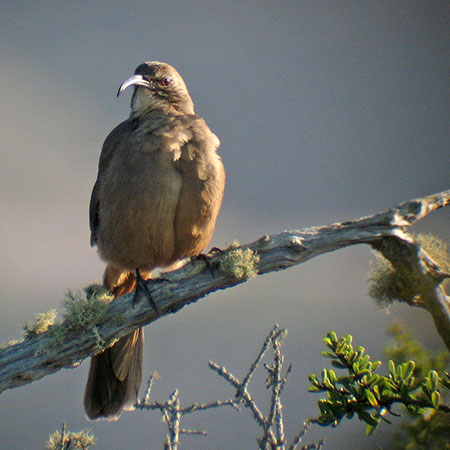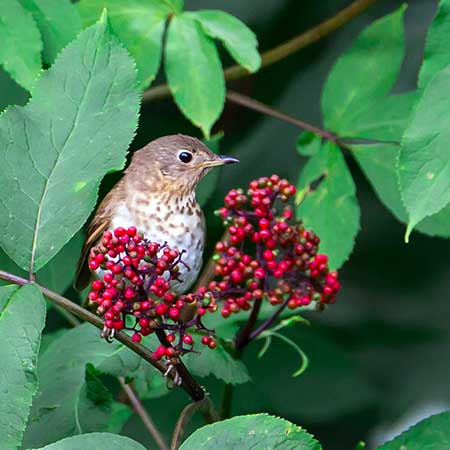Birds
The health of Mt. Tam’s birds can be looked at in a variety of ways. Below is an assessment of the overall health of the mountain’s avian communities obtained by combining the health assessments of a number of bird communities.
Additional details about the health of these bird communities is available through links in the photos above. There are also links to two individual species of birds for which enough is known to asses their condition and trend: Osprey and Northern Spotted Owls.
Why Was This Indicator Chosen?
Birds are recognized as indicators of ecological change (Carignan & Villard, 2002). They also provide a wide variety of important ecosystem services including devouring pests, pollinating flowers, dispersing seeds, scavenging carrion, cycling nutrients, and modifying the environment in ways that benefit other species (Whelan et al., 2015). Agencies within the One Tam area of focus have a relatively long history of bird monitoring, enabling estimates of population trends for multiple species across a range of vegetation communities.
What is Healthy?
A healthy population of birds on Mt. Tam would be stable or increasing over the next five years. Given environmental stressors beyond our control, it may not be realistic to try to maintain a certain abundance for all species. However, overall population size and fitness are likely to be important components of a species’ ability to track environmental change (Williams et al. 2008).
What is The Current Condition?
Overall, Mt. Tam’s birds are currently in Good condition.
What is the Current Trend?
Birds on Mt. Tam currently appear to be experiencing No Change in their trend.
How Sure Are We?
Confidence in this assessment is High, as Mt. Tam’s birds have been fairly well studied, and because of the large number of species considered in this assessment. Bird species were aggregated to reach a summarized confidence level for individuals sharing similar traits, as well as overall.
What is This Assessment Based On?
- Marin Municipal Water District (Cormier et al., 2014)
- National Park Service (Gardali & Geupel, 1997) and just riparian areas (Humple & Porzig, 2012)
- Marin County Parks (Gardali et al., 2010)
What Don’t We Know?
Key information gaps include:
- Data on grassland-associated species, wintering and migratory bird populations, and time series data for agencies other than the Marin Municipal Water District
- Population demographics such as survival and reproductive success
| Birds | Condition & Trend | Confidence | |
|---|---|---|---|
 |
Birds |
High | |
 |
Climate-vulnerable Birds |
High | |
 |
Conifer Forest Birds |
High | |
 |
Grassland Birds |
Unknown | |
 |
Northern Spotted Owl |
Moderate | |
 |
Oak Woodland Birds |
High | |
 |
Osprey |
Moderate | |
 |
Riparian Birds |
High | |
 |
Shrubland Birds |
High |











